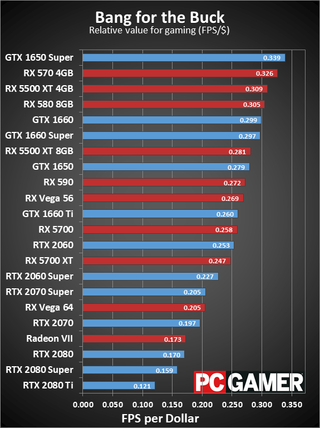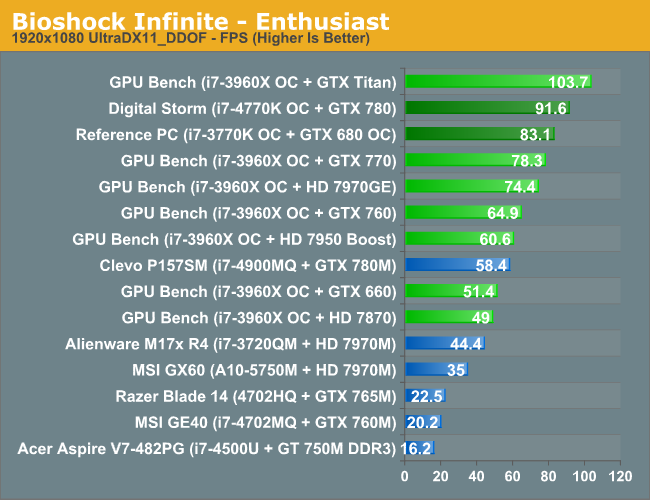

- #Desktop graphic card benchmark list how to#
- #Desktop graphic card benchmark list full#
- #Desktop graphic card benchmark list pro#
- #Desktop graphic card benchmark list professional#
- #Desktop graphic card benchmark list series#
Quadro vs GeForce and Radeon vs Radeon Pro This means that AMD and Nvidia cards cannot be compared in that respect. Nvidia uses the term Cuda cores while AMD refers to GCN cores. These specifications vary between GPU generations and across the various tiers, and the cores in Nvidia and AMD cards aren’t the same. The specifications most often mentioned are memory (capacity, bandwidth and speed), the number of cores (basically the guts of the hardware), and the card’s clock speed (in MHz).
#Desktop graphic card benchmark list full#
Reviews of the best graphics cards tend to be full of jargon that explains the kind of performance you can expect. For the best performance and to future-proof your graphics, limit your search to the latest cards. When a new generation is released, it steps things up with more cores, memory, bandwidth and features.
#Desktop graphic card benchmark list series#
Nvidia and AMD usually produce a new series of graphics card every two years or so. For 4K or 5K displays, all graphics cards now support at least the DisplayPort 1.4 and HDMI 2.0 standards that offer the bandwidth needed for 60hZ refresh rates.įinally, the single biggest factor in determining the performance of graphics cards is the hardware generation of the series. All modern graphics cards use either HDMI or DisplayPort. Similar to the Turbo mode on Intel CPUs, when a graphics card is under heavy load it will run at a higher clock speed for better performance until it hits its maximum to avoid overheating.ĭon’t forget to consider your display and the output of a graphics card. The clock speed of the graphics card is quoted as a base figure. This varies drastically across the various performance and price tiers, from the entry-level £100 card to the more high-end £1000+ beasts. The rendering power of a card is determined by the cores. 60 FPS is the sweet spot when it comes to performance, and if you own a 144Hz display you'll be pushing your graphics card hard to keep up with elements like refresh rate. The faster the performance of your graphics card, the better effects and more detail you can expect from high-end gaming. If you need 4K resolution, you're looking at needing a graphics card with higher memory - 8GB or more is now common on the higher tier cards. For higher resolution needed for elements like creating or gaming, you're going to need a higher memory. When you're looking for a new graphics card there are some important points to consider.
#Desktop graphic card benchmark list how to#
The best graphics cards: How to pick the right one for you Each manufacturer like MSI, Asus, Gigabyte and so on sell their own versions of each card which will all look slightly different. It's important to note that individual graphics cards have generic reference models that aren't usually for sale. If you're a digital creative who works with elements like graphic design, 3D modelling or illustration, having the best graphics card will help your workflow by running your applications smoothly and significantly boosting rendering times. By using their impressive hardware power, GPUs maximise 3D visuals and determine the right resolution and frame rate to give you the best on-screen action. Graphics cards serve two major roles in computers. The best graphics cards: What to consider

OpenCL and Cuda applications in particular absolutely fly on the Turing architecture, so the RTX 4000 will make a massive difference when working with creative software, plug-ins and filters, resulting in an excellent performance when rendering images, 3D and video. It also requires less power than the bulkier GeForce cards. This graphics card boasts excellent performance in design applications and comes in a svelte single-slot design that helps it fit into small cases. If you're after a workstation-class graphics card at a relatively low price, you couldn't do much better than the Nvidia Quadro RTX 4000. Have a setup that needs an external GPU instead? You can read up on our guide to eGPUs here.
#Desktop graphic card benchmark list professional#
This guide is your handy place to find both the best professional and consumer graphics cards in one place, and we've chosen a selection for a range of different budgets and needs. Nowadays, there's plenty of variation in graphics cards which can be overwhelming when choosing one that's best for you. However, as technology has expanded and improved consumer graphics cards now offer high-end performance equal to the more professional options without the higher price tag. If you're an industry creative, professional graphics cards used to be the only viable choice for doing 3D and digital art work. Their high-end power means they usually have high price tags. Alternatively, professional graphics cards are powerful GPUs aimed at creative professionals. Consumer graphics cards are mostly aimed at gamers: they have a wider variation of price ranges that go from budget models to higher top-end cards. There are two variations of graphics cards to choose from when looking to purchase.


 0 kommentar(er)
0 kommentar(er)
